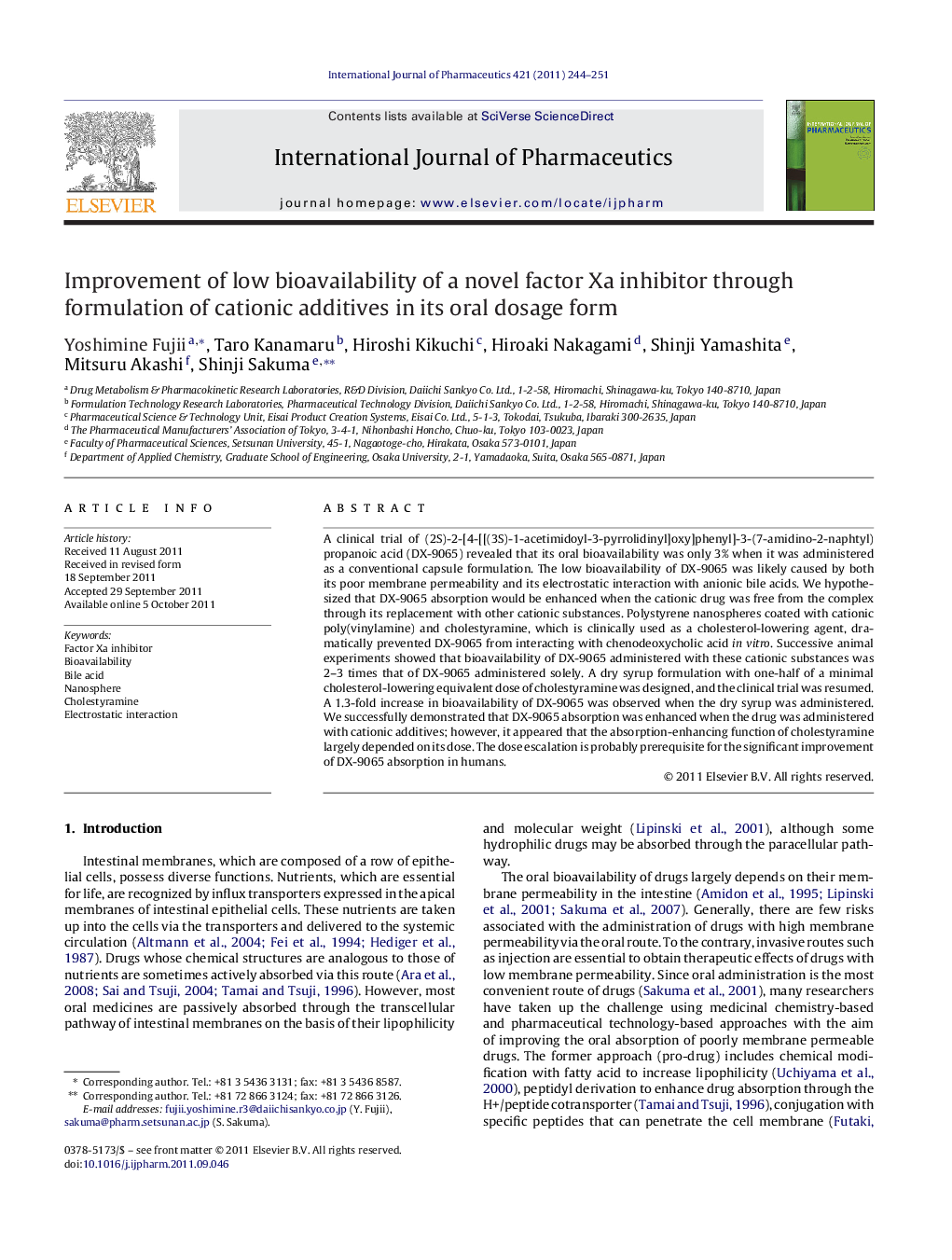| Article ID | Journal | Published Year | Pages | File Type |
|---|---|---|---|---|
| 5821186 | International Journal of Pharmaceutics | 2011 | 8 Pages |
A clinical trial of (2S)-2-[4-[[(3S)-1-acetimidoyl-3-pyrrolidinyl]oxy]phenyl]-3-(7-amidino-2-naphtyl) propanoic acid (DX-9065) revealed that its oral bioavailability was only 3% when it was administered as a conventional capsule formulation. The low bioavailability of DX-9065 was likely caused by both its poor membrane permeability and its electrostatic interaction with anionic bile acids. We hypothesized that DX-9065 absorption would be enhanced when the cationic drug was free from the complex through its replacement with other cationic substances. Polystyrene nanospheres coated with cationic poly(vinylamine) and cholestyramine, which is clinically used as a cholesterol-lowering agent, dramatically prevented DX-9065 from interacting with chenodeoxycholic acid in vitro. Successive animal experiments showed that bioavailability of DX-9065 administered with these cationic substances was 2-3 times that of DX-9065 administered solely. A dry syrup formulation with one-half of a minimal cholesterol-lowering equivalent dose of cholestyramine was designed, and the clinical trial was resumed. A 1.3-fold increase in bioavailability of DX-9065 was observed when the dry syrup was administered. We successfully demonstrated that DX-9065 absorption was enhanced when the drug was administered with cationic additives; however, it appeared that the absorption-enhancing function of cholestyramine largely depended on its dose. The dose escalation is probably prerequisite for the significant improvement of DX-9065 absorption in humans.
Graphical abstractDownload high-res image (171KB)Download full-size image
